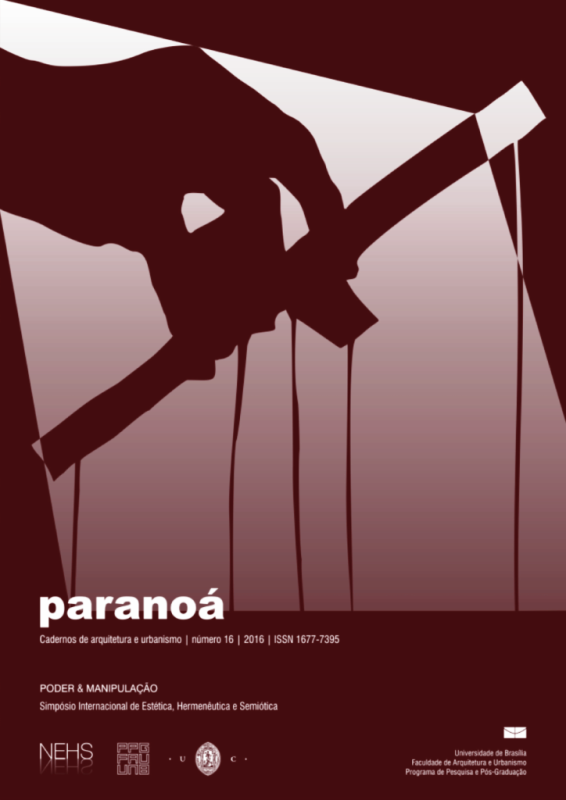Arquitetura, vazio moderno e o espaço social
DOI:
https://doi.org/10.18830/issn.1679-0944.n16.2016.04Palavras-chave:
Arquitetura moderna, Vazio, Reconhecimento social, Hermenêutica, ProjetoResumo
A vanguarda do Movimento Moderno promulgava a inserção de vazios urbanos no tecido urbano compacto da cidade do século XIX. Para os modernos, o espaço urbano edificado conjugado com áreas verdes, áreas amplas e áreas para livre circulação configuraria uma nova ordem social e um habitat social mais aberto ao convívio coletivo. A Glassarchitekture caracterizada por poucos elementos, estruturas esbeltas e vedações transparentes faziam parte principalmente do que Kenneth Frampton denominou de “tradição moderna minimalista”. Essa tectonicidade reduzida ao máximo tornaram-se objetivos estéticos da arquitetura moderna do início do século XX. Os críticos ao modernismo denunciavam os espaços demasiadamente abstratos, onde não há lugar para o acontecimento empírico, para o ornamento ou para o acaso levando a um empobrecimento do ambiente cultural e provocando um ‘esvaziamento’ da esfera pública. Como reconhecer a luta por identidades no espaço projetado e construído? Como reconhecer culturalmente o moderno ou o modernista sem abrir mão de memórias coletivas e tradições passadas? Pretende-se compreender a questão do vazio moderno como espaços de experiência, tanto como fenômenos em constante configuração, como na sua historicidade. Parte-se da premissa de que construções do espaço social não são representações ideais ou totalizantes como os modernistas pregavam. Em uma análise hermenêutica do vazio, a interpretação de memórias e promessas presentes na luta por reconhecimento no cotidiano da cidade planejada e vivenciada rompe com a ideia da arquitetura moderna como objeto original, finalizada na sua concepção e construção.
Downloads
Downloads
Publicado
Como Citar
Edição
Seção
Licença
Autores que publicam nesta revista concordam com os seguintes termos:
- Autores mantém os direitos autorais e concedem à revista o direito de primeira publicação, com o trabalho simultaneamente licenciado sob a Licença Creative Commons Attribution que permite o compartilhamento do trabalho com reconhecimento da autoria e publicação inicial nesta revista. http://creativecommons.org/licenses/by/4.0
- Autores têm autorização para assumir contratos adicionais separadamente, para distribuição não-exclusiva da versão do trabalho publicada nesta revista (ex.: publicar em repositório institucional ou como capítulo de livro), com reconhecimento de autoria e publicação inicial nesta revista.
- Autores têm permissão e são estimulados a publicar e distribuir seu trabalho online (ex.: em repositórios institucionais ou na sua página pessoal) a qualquer ponto antes ou durante o processo editorial, já que isso pode gerar alterações produtivas, bem como aumentar o impacto e a citação do trabalho publicado (Veja O Efeito do Acesso Livre).















